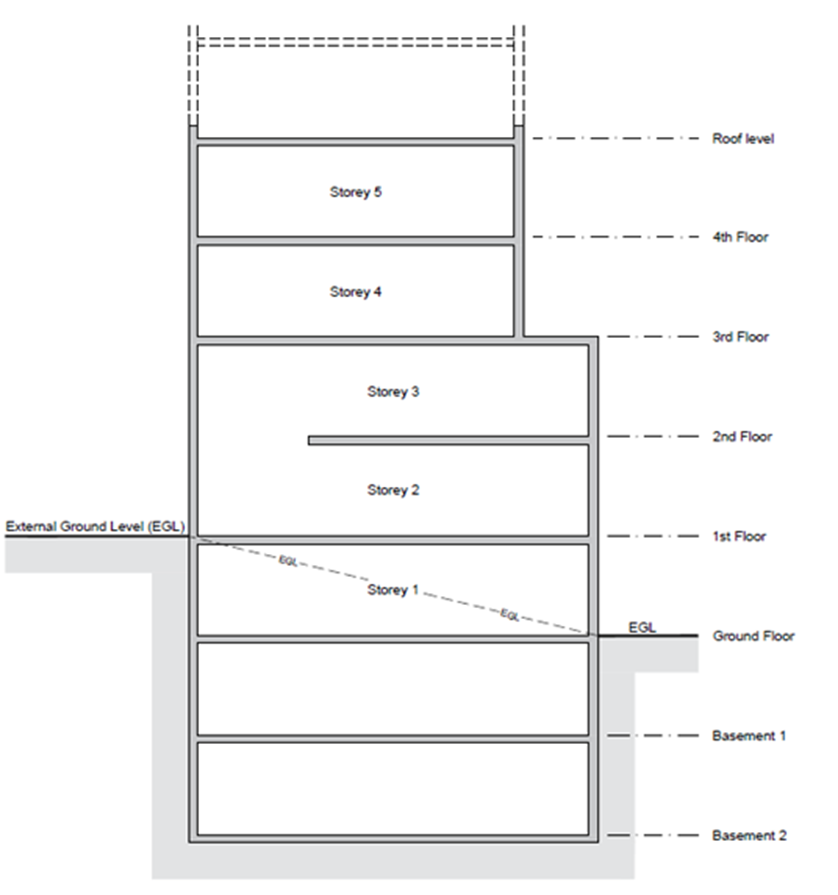How to measure storey heights
A storey is defined as the space between two consecutive floors or a floor and a roof. The number of storeys should be counted from the lowest external ground level. Figures 1 shows an example of a 5 storey building as the ground floor is counted as a storey.
Please note, this is only in relation to our Warranty guidance and not for using in connection with Building Regulation assessments. (For Building Regulation queries, advice should be sought from the Building Control Body.)
How this affects our Technical Manual
The guidance within the Technical Manual is primarily for low rise construction and in the introduction page of our Technical Manual, we define low rise construction as: ‘Buildings of 5 storey or lower – including the ground floor level’.
So in simple terms that is: - Ground, 1st, 2nd, 3rd, 4th floors, see figure 1 on the next page for a visual explanation.
When do our engineers need to be involved?
The number of storeys for a given development will also trigger when a structural referral will need to be carried out by our Engineers. For a full list of situations where a structural referral is required and for the most up to date guidance on structural referrals, please refer to the Operations and Guidance Manual.
Examples include but not exclusive:
- 4 and 5 storey buildings on bored piles (Automatically referred from CSU)
- 5 storey buildings (Automatically referred from CSU)
- Framed structures on buildings of 4 storeys or more. (Manual referrals by RMS)

Figure 1
Visual explanation for counting stories
- Notes: Our Major Projects team get involved at 6 storeys and above
- For Warranty purposes: To count the number of storeys in a building, count only at the position which gives the greatest number and exclude any basement storeys. (Building Regulations have an additional guidance for separated buildings)
Note:
To count the number of stories in a building or separated part of a building, count only at the position which gives the greatest number and exclude any basement storeys.
When do the Major Projects Service need to be involved?
Our Major Projects team get involved at 6 storeys and above.

